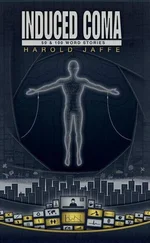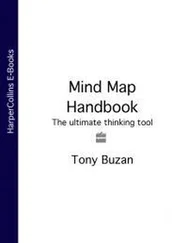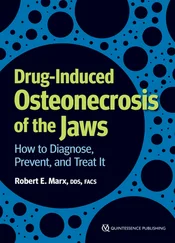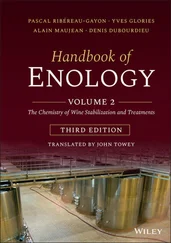1 Cover
2 Title Page Handbook of Aggregation‐Induced Emission Volume 1 Tutorial Lectures and Mechanism Studies Edited by Youhong Tang Flinders University Adelaide, Australia Ben Zhong Tang The Chinese University of Hong Kong Shenzhen, China
Volume 1 Tutorial Lectures and Mechanism Studies
3 Copyright Page
4 Dedication Page
5 List of Contributors
6 Preface to Handbook of Aggregation‐Induced Emission
7 Preface to Volume 1: Fundamentals
8 1 The Mechanistic Understanding of the Importance of Molecular Motions to Aggregation‐induced Emission 1.1 Introduction 1.2 Restriction of Intramolecular Motion 1.3 Restricted Access to Conical Intersection 1.4 Restriction of Access to the Dark State 1.5 Suppression of Kasha’s Rule 1.6 Through Space Conjugation 1.7 Perspective References
9 2 Understanding the AIE Mechanism at the Molecular Level 2.1 Introduction 2.2 Theoretical Methods 2.3 Revealed AIE Mechanism 2.4 Visualize Calculated Parameters in Experiments 2.5 Molecular Design Based on AIE Mechanism 2.6 Summary and Outlook Acknowledgments References
10 3 Aggregation‐induced Emission from the Restriction of Double Bond Rotation at the Excited State 3.1 Introduction 3.2 AIE Phenomena and Applications from RDBR Mechanism 3.3 Conclusions References
11 4 The Expansion of AIE Thought 4.1 Aggregation‐Induced Emission 4.2 Photoluminescence Materials Based on Molecular Set 4.3 Mechanoluminescence Materials Based on Molecular Set 4.4 Mechanochromism Materials 4.5 Room Temperature Phosphorescence Materials Based on Molecular Uniting 4.6 Conclusion and Perspectives References
12 5 Clusterization‐Triggered Emission 5.1 Introduction 5.2 Pure n ‐Electron Systems 5.3 Pure π ‐Electron Systems 5.4 ( n , π )‐Electrons Systems 5.5 Other Systems 5.6 Summary References
13 6 Crystallization‐induced Emission Enhancement 6.1 Introduction 6.2 Tetraphenylethylene Derivatives 6.3 CIEE Active Luminogens with Bulky Conjugation Core 6.4 Other High‐contrast CIEE Luminogens 6.5 Potential Applications 6.6 Summary and Perspective References
14 7 Surface‐fixation Induced Emission 7.1 Introduction 7.2 What Happened to the Characteristics of Molecules on the Clay Mineral Nanosheets 7.3 Clay–Molecular Complexes 7.4 Absorption Spectra of Clay–Molecular Complexes 7.5 Emission Enhancement Phenomenon in Clay–Molecular Complexes: S‐FIE 7.6 Mechanism of Surface‐Fixation Induced Emission 7.7 Summary and Outlook Acknowledgment References
15 8 Aggregation‐induced Delayed Fluorescence 8.1 Introduction 8.2 Novel Aggregation‐induced Delayed Fluorescence Luminogens 8.3 Conclusion and Outlook References
16 9 Homogeneous Systems to Induce Emission of AIEgens 9.1 Introduction 9.2 Homogeneous Solution 9.3 Liquid 9.4 Gels and Network Polymers 9.5 Crystalline Materials 9.6 Outlook and Future Perspectives References
17 10 Hetero‐aggregation‐induced Tunable Emission (HAITE) Through Cocrystal Strategy 10.1 Introduction 10.2 Interactions Within Organic Cocrystals 10.3 Preparation of Organic Cocrystals 10.4 Molecular Stacking Modes Within Organic Cocrystals 10.5 Characterization of Organic Cocrystals 10.6 HAITE Through Cocrystal Strategy 10.7 Summary and Outlook References
18 11 Anti‐Kasha Emission from Organic Aggregates 11.1 Introduction 11.2 Anti‐Kasha Emission from Aromatic Carbonyl Compounds in Aggregates 11.3 Anti‐Kasha Emission from Azulene Compounds in Aggregate 11.4 Anti‐Kasha Emission from Other Unconventional Aromatic Compounds in Aggregates 11.5 Conclusions References
19 12 Aggregation‐enhanced Emission: From Flexible to Rigid Cores 12.1 Introduction 12.2 Freely Moving Rotors‐induced Emission Enhancement 12.3 Guest‐induced Emission Enhancement 12.4 Conclusion Acknowledgment References
20 13 Room‐temperature Phosphorescence of Pure Organics 13.1 Introduction 13.2 Fundamental Mechanism in Organic Phosphorescence 13.3 Recent Progress in Organic RTP Materials 13.4 Conclusions and Perspectives References
21 14 A Global Potential Energy Surface Approach to the Photophysics of AIEgens: The Role of Conical Intersections 14.1 Introduction 14.2 Methodological Aspects 14.3 CI‐centered Global PES for AIEgens 14.4 Crystallization‐induced Phosphorescence 14.5 Effect of Intermolecular and Intramolecular Interactions on the Photophysics of AIEgens 14.6 New Challenges 14.7 Conclusions and Outlook References
22 15 Multicomponent Reactions as Synthetic Design Tools of AIE and Emission Solvatochromic Quinoxalines 15.1 Introduction 15.2 Synthetic Approaches to Quinoxalines via Multicomponent Reactions and One‐Pot Processes 15.3 Photophysical Properties and Emission Solvatochromicity of Quinoxalines 15.4 AIE Characteristics and Effects of Quinoxalines 15.5 Conclusion Acknowledgments References
23 16 Aggregation‐induced Emission Luminogens with Both High‐luminescence Efficiency and Charge Mobility 16.1 Introduction 16.2 p‐Type OSCs 16.3 n‐Type OSCs 16.4 Ambipolar OSCs 16.5 Conclusion and Perspective References
24 17 Morphology Modulation of Aggregation‐induced Emission 17.1 Introduction 17.2 Aggregation Modulation of AIE Bioprobes via Hydrophilicity Improvement 17.3 Thermodynamic Self‐assembly of AIE Materials 17.4 Morphology Tuning of AIE Nanoaggregates 17.5 Kinetic‐driven Preparation of AIE NPs 17.6 Conclusion and Outlook References
25 18 AIE‐active Polymer 18.1 Introduction 18.2 Photophysical Properties 18.3 Applications 18.4 Conclusion and Perspective Acknowledgments References
26 19 Liquid‐crystalline AIEgens 19.1 Introduction 19.2 Materials: Molecular Design 19.3 Applications of LC AIEgens 19.4 Conclusion References
27 20 Push–Pull AIEgens 20.1 Introduction 20.2 Basic Concept of Molecular Design 20.3 Push–Pull AIEgens from Rotor Structure 20.4 Push–Pull AIEgens from ACQ Chromophores 20.5 Concluding Remarks References
28 Index
29 End User License Agreement
1 Chapter 2 Table 2.1 Calculated HOMO–LUMO energy gap (∆ E g), electric transition dipole... Table 2.2 Calculated k r, k ic, and Φ Fin both solution and aggregate ph... Table 2.3 Calculation structural parameters of COTh [43] in both gas phase ... Table 2.4 The calculated spectral properties and reorganization energies co... Table 2.5 Calculated k r, k ic, and Φ Fin both solution and aggregate ph... Table 2.6 Calculated room‐temperature k ic(s −1) for nondeuterated (H‐...
2 Chapter 4 Table 4.1 Data of single crystals. Table 4.2 Optical properties and single‐crystal information of the compound...
3 Chapter 7Table 7.1 Absorption maxima ( λ max) of molecules with and without clay ...Table 7.2 The fluorescence quantum yields of various molecules in a bulk so...
4 Chapter 8Table 8.1 Photophysical parameters of DMF‐BP‐PXZ, DPF‐BP‐PXZ, and SBF‐BP‐PX...Table 8.2 The key electroluminescence data of the AIDF materials.
5 Chapter 10Table 10.1 Comparison between current HAITE and AIE.
6 Chapter 12Table 12.1 Comparative photophysical properties of derivatives 8‐10....
7 Chapter 14Table 14.1 Emission quantum efficiencies ( Φ fl) of HC and HP molecular ...
8 Chapter 20Table 20.1 Photophysical properties of BT‐based AIEgens.Table 20.2 Photophysical properties of compounds 77– 82.Table 20.3 Photophysical properties of DPP‐based AIEgens in solution and ag...Table 20.4 Photophysical properties of PBI‐based AIEgens in solution and ag...
1 Chapter 1 Figure 1.1 (a) Fluorescence quantum yield of HPS in the acetone/water mixtur... Figure 1.2 (a) UV–vis absorption and (b) photoluminescence (PL) spectra of c... Figure 1.3 Schematic illustration of RIM mechanism. (a) Restriction of intra... Figure 1.4 (a) Chemical structures of TPE derivatives with increasing rigidi... Figure 1.5 (a) Chemical structures and the overlap of the S 1,minconformatio... Figure 1.6 (a) Chemical structures, the overlaps of the S 1,minconformation ... Figure 1.7 (a) Chemical structures and fluorescence quantum yield in the dil... Figure 1.8 (a) Illustration of the coupling between the bright state and the... Figure 1.9 Molecular structure, calculated energy levels, fluorescence, and ... Figure 1.10 (a) Schematic illustration of the cluster formation, energy vari... Figure 1.11 Schematic illustration of the excited‐state (a) intramolecular t...
Читать дальше












